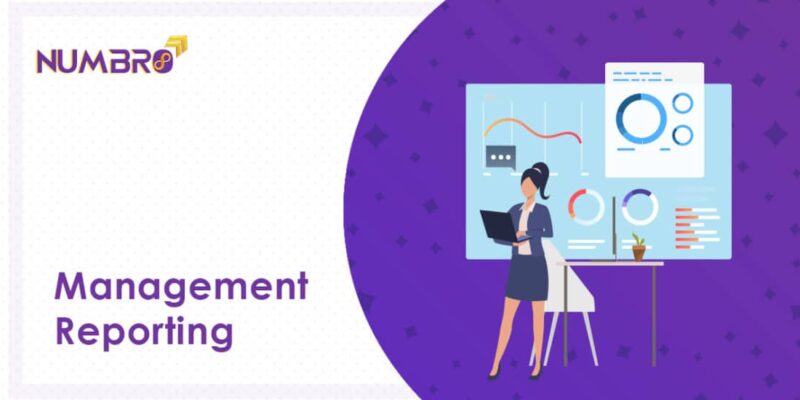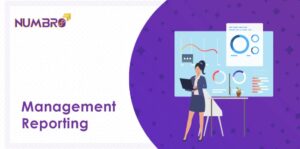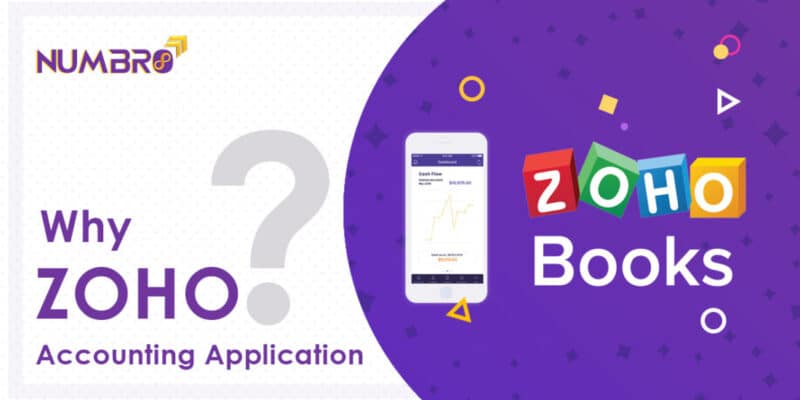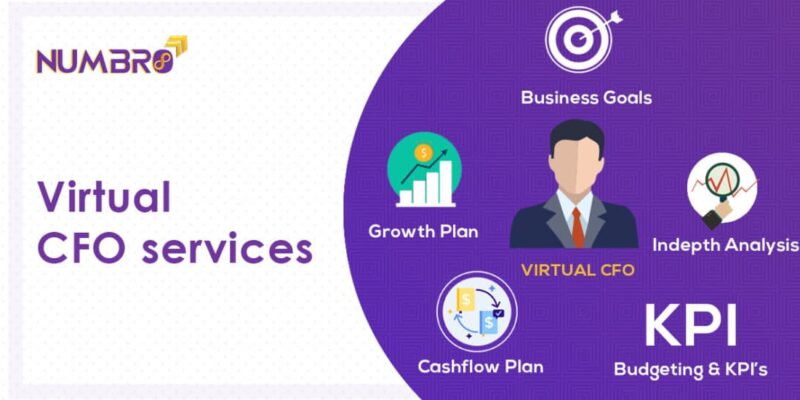Management Reporting
Management reporting is a means of tabulating business information that is vital for making a business decision. Management reporting is a structured process where the entire business process is recorded, stored, processed and communicated in a way to give insightful reports to the management.
Corporate business environment has evolved at a faster rate in the last few decades. There has been change in the working structure of the top management personnel too.
In the good olden days, where management and staff of the enterprise were physically present in the place where business is carried on, at present this perception has taken a shift and the management is de-centralized at multiple locations.
With the concept of de-centralized management, concept of cloud computing is being popularized. Through cloud computing, irrespective of the location, business applications can be retrieved from any location in the world.
This has called for a change in management style too since the employees, management should be more informed, and they have more access to the business information.
Tools for management reports
There are some new age advanced analytics tools for management reports to understand the business performance.
Though the same reporting that is arrived at from accounting software, there is a need to use advances analytics applications to make the process simple and dig deep into the data to have customized business intelligent reports.
Tools like Microsoft Power BI, Tableau, Zoho analytics etc help in converting Big data into purposeful reports for the customized needs of the management.
A good understanding on these tools with functional expertise on the management reporting would help better presentation of the Key figures to the management.
These tools help in scheduling reports, creating meaningful dashboards and helps in better visualization of data.
Management Reporting – Business growth catalyst
- Big Data into Purposeful Reports: As the business grows, the number of transactions goes up and get more complicated. Management reporting helps to organize such data so that decision making becomes effortless to the top management. The risk of uncertainty that exists in decision-making is reduced to an extent, as the decision is made on the facts available.
- Cost Management: Management reporting also assists the management in cost control through reviewing the budgeted cost Vs actuals and helps to arrive at variances and the means to address them.
- Business at Fingertips: Management reporting helps in building better understanding of the key figures of the organization. This helps them to have the business figures in subconscious for decision-making process.
- Performance tracking (KPI tracking): Management provides a complete track on performance levels of various departments and value addition at various stages reporting so that the performance can be reviewed and exceptions can be flagged immediately.
- Quicker Responses: A business may loose on its assets if the management are being reckless. Hence a steady monitoring on the functioning of business is primitive. Management reporting helps to achieve this objective by providing information to the management on timely basis.
- Improves Efficiency: Management reporting helps to increase the overall efficiency of the organization. It helps to communicate to the low-level management of hierarchy, the areas where attention needed
Each area in a business seeks review of the management. Any imprudence from management personnel would be a costly affair to the enterprise as a whole.
Management is responsible for effective functioning of the business at every level. This is possible if management possesses knowledge on each functional level at a micro level. Hence a detailed reporting has to be available with the management.
To understand the business of an organisation the following are some of the basic reports to be understood by the management along with the purpose which helps to analyse the reports and the make any decisions.
Types of Reports and Their Purpose:
| S.No | Type of Report | purpose |
| 1) | Business overview | |
|
|
Profit and loss | Exemplifies the profitability status of the company. That is whether a company is in profit or loss. |
|
|
Cash Flow Statement | To have a detailed check on the movement of cash inflows and outflows and the cash available cash balances. |
|
|
Balance Sheet | Provides status of the Equity, Assets and liabilities of the company as separate line items. Balance sheet is the base to make any kind of investment decisions. |
|
|
Financial Overview | The Cash Flow Statement, Profit and Loss account and Balance Sheet accumulated, provides the Financial Overview of the company. |
|
|
Gross Profit Margin by Month | Gross profit is the excess of direct income over the direct expenses. Gross profit margin shows us whether sales are sufficient to cover the cost of goods sold. |
|
|
Revenue vs Expense by Month | It represents the contribution, which implies whether sales are being sufficient to incur direct costs and any excess is used to incur fixed expenses of the company. Through management reporting on monthly check on the revenue and expenses, management would come to know if there is any deficiency to meet its expenses, also have a check for any unnecessary expenses, which could be cut down. |
|
|
Total Income by Month | Income is the basic life line for any business to work. Management reporting on income report can be used to evaluate the net worth of the company and ability to make payments on expenses and debt. |
| 2) | Sales | |
|
|
Sales by Customer | Helps the company identify its top customers from whom income is derived. These customers gain loyalty and trust of the company and management should make efforts to retain such customers for long-term. |
|
|
Sales by Item | Sales by item provides a detailed management reporting on which item is performing well and the items that need attention. Management can change the marketing strategy of those items, which are low performing. |
|
|
Sales by Sales Person | Management reporting on sales by sale persons contains details of the sale persons who have achieved their targets on time. It helps to keep a check on the sale persons whose performance is advantageous to the company and management could decide on the incentives to be given based on their performance. |
|
|
Sales Report | Management reporting on sale is a detailed report about the sales done by the company. This report helps the company to keep a track of their best performing products and services and helps define company’s strategy to increase the sale volume. |
|
|
Sales Trend | Shows the trends incurred in sales volume over a particular period. Management reporting on sales trend determines the report on sale of products or services which are increasing or declining and regulates the course of actions to be taken. |
|
|
Discounted Invoices | Management reporting on Discounted invoices provides particulars about the top discounts given by the operational managers. Through this report, top personnel would be informed about the percentage of discounts allowed and also why such discounts have been allowed? Management may have a check on whether the discounts are being allowed as per the authorized limits or no. |
|
|
Fast Moving Products | Management reporting on Fast moving products contains details of top fast-moving products helps management to plan a strategy on producing more of such products to increase sales percentage and also estimate the relative cost of sales for such products. |
|
|
Sales by Profit Centre | A profit centre is a strategic business unit or department that determines the bottom-line profitability of the company. A management report based on profit centre determines the sale done by each unit and also differentiates performance levels of each unit. |
| 3) | Receivables | |
|
|
Customer Balances | Receivables are the main stream line of any company. As company’s functioning depends on the monies they earn, a management report on customer balances, helps the management to instruct the credit control team to follow up with the customers and receive their monies on regular basis. |
|
|
Aging Summary | Aging refers to the time period agreed upon by the company with the customers to receive the amount invoiced. Management reporting on aging summary helps the management to determine which invoices are overdue for payment to be received and what is the working capital struck and the opportunity cost associated. |
|
|
Aging Details | Aging details consist of a complete report about customers, period for which they are due for payment amount to be received etc. Management can have a check on the balances to be received through Management reporting on aging details. |
|
|
Estimate Details | Projects in the pipeline help the management to understand the resource requirements of the company in the coming months. This reports help to factor the resources required. |
|
|
Month wise Received & Overdue Invoices | Through monthly report about payments received and payments due for receipt, management could plan for investment into the company. |
| 4) | Payments Received | |
|
|
Payments Received | A certain credit period is allowed to the customers of the company for receipt of payments. After such period due, amounts are received from the customers. A complete report on the payments received assists the management gain knowledge on the monies received by the company for the period concerned and helps in offering cash discounts as well |
|
|
Time to Get Paid | Arriving at working capital requirements is very much required to arrange funds in time, this can be done only through understanding the timing of the receivables. |
|
|
Credit Note Details | Credit note is a receipt given to the customer for the goods returned by him. It is a voucher raised in case of any revision in invoice value or any faulty goods issued or any discounts given etc. Such voucher can be used to write-off against future purchases. The management can take necessary action on issues pertaining to the reason for which such credit note has been raised through management reporting on credit note. |
|
|
Refund History | Refund can be in case where amount paid by the customer and later on such purchase has been cancelled or excess amounts paid or any invoice has bee wrongly raised for which payment has been made etc. Refunds are not a good sign to the company as it implies business being withdrawn by the customers. Management should identify the root cause for such faults in the company and issue orders to the low-level operational management. |
| 5) | Purchases | |
|
|
Purchases by Vendor | Enterprise may purchase items from different vendors. Hence a complete list of vendors determines the class of suppliers available for use. If company maintains healthy relations with the vendors, then the company can rely upon them to maintain inventories at low level and increase customer satisfaction. |
|
|
Purchases by Item | Management reporting on purchases by item report helps the management to know how much of the material to be procured, based on the top purchases made. This helps the company to maintain its supply level on par with demand. |
|
|
Expense Details | Management reporting of expense details consists of a comprehensive list on expenses incurred by the company. It consists of both direct and indirect expenses. Through this report, management could get to know the cost of doing sales. Management could plan for cost cutting or reduction where ever necessary. |
|
|
Expenses by Category | A business puts in lot of effort to generate revenue. In this process there are certain expenses incurred to produce such income. Such expenses are bifurcated into different categories for their easy identification.
Management reporting on this, could help management to know the category of expense in which their monies are being spent. Category wise expense would be more reliable, as the specific area of avoidable expense can be identified and reduced accordingly. |
|
|
Expenses by Customer | In certain cases, it so happens that company may need to invest some money on the customer. A record of such expenses is also to be maintained. Management reporting on this, guides the company to maintain a track of monies spent on each customer and also helps to assign such expenses to customer account or reimbursed from them. |
|
|
Expenses by Project | Companies cannot rely on a single project for functioning of its business. They bid on various projects and get themselves assigned to such projects. With maintenance of separate books for each project, the profitability of each project can be estimated and the company can withdraw from those projects which have been proven to be a burden for the company for certain period of time. |
|
|
Expenses by Employee | Employee expenses is a separate line item in the profit and loss account. By recording expenses based on each employee it helps to know the investment made by the company on their human resource. Management can carefully analyse and choose their human resource so that their monies are not wasted. |
| 6) | Payables | |
|
|
Vendor Balances | Vendor balances report consists of a complete list of vendor payments due to be made by the company. The maintenance of account balances directly relates to organization’s financial stability and reputation. Management reporting on this would assist in knowing the money flowing out of business. |
|
|
Aging Summary | As discussed earlier, aging refers to the time period in which monies can be paid. Aging summary in accounts payables refers to the time period allowed by the vendors for payment of the amount due to them. Management reporting on aging summary helps as a reminder for the company to make payments before they become overdue. |
|
|
Aging Details | Aging details is complete set of report regarding details of vendors with the period and amounts which are due for payments. It is a detailed set of management reporting provided, consisting of the above details, so that it can make the necessary arrangements to clear off the dues of the suppliers in first place. |
|
|
Bill Details | An invoice has to be documented for each purchase made by the company. Company has to have a track of every item that is brought into the business and used for the purpose of generating income. A complete management reporting on bill details helps company track the number of invoices received and the payments to be made for the same. |
|
|
Payments Made | Every bill received into the company is entered into the system and processed for payment. Few payments are paid on the counter and the other would be allowed certain credit period. A list of all the payments made are to be maintained in order to avoid, non-payment or double payments. |
|
|
Refund History | Refund in case of accounts payable would be regarding any debit notes raised to the vendors. There would be various reasons for raising a debit note such as over-value of invoice, poor quality of materials etc. Where payments have been made to the vendors, in such cases, the company could raise for a refund request. A management report on refund history would guide the management on amounts due to be received and also which vendor supplies are of poor quality. |
|
|
Purchase Order Details | Before purchase of a material, a purchase requisition is raised from the stores and forwarded to the purchase department where a purchase order (PO) is raised for the required quantity and sent to the vendor. As many POs may be raised even for a single vendor, tracking of purchase orders become essential. Through management reporting on purchase orders, they would know the number of POs being raised and whether the supplies are according to the PO. |
|
|
Purchase Orders by Vendor | Every PO raised in the company consists of the details of vendors, the quantity to be received, unit price of the material etc. As quantity may not be received in lump sum in all cases, Report on POs by vendor would keep track of whether the quantity is received in full and according to the PO raised. |
|
|
Top Vendors by Orders Handled | A MIS on top vendors by orders handled, helps management knowing the reliable and trustworthy vendors of their business. If the vendors fulfill the company’s material requirement on time, it would meet its demand accordingly, which proves profitable to the company. |
|
|
Vendors by Discount Offered | It is a usual tendency for every purchaser to negotiate on the prices. Hence, company orders from those vendors, who offer discounts at a greater extent. Management reporting on vendors by discount offered, would help management gain knowledge on, to what extent the company’s cost is being reduced. |
| 7) | Inventory | |
|
|
Inventory Summary | Inventory summary consists of the opening stock, any purchases made during the period, stock consumed and closing stock at the end of the period. Management reporting on inventory helps to know the current stock position, whether company could meet any variation in demand, re-order of product if necessary and ensures smooth flow of operations. |
|
|
Inventory Valuation Summary | As stated above, excess stock left in hand after exemption in closing stock and the same is carried forward to the next period. A value is to be determined to such stock as the stock available is a combined pile of past available lots which might be purchased at different rates. Determining such value is known as inventory valuation. Management reporting on details of, on how the inventory is valued helps the management to rely on such valuation. |
| 8) | Taxes | |
|
|
Tax Summary | The main purpose government levy taxes are to accumulate funds for the functioning of government chicaneries. There are different forms of tax legislation’s in India. A summary of all the taxes paid to the government will help the management to arrive at taxes paid to the government. |
|
|
Tax Withheld Summary | Tax withheld is the amount deducted from the amount paid to the customers. A summary of the taxes withheld will ensure the company to repay such amount to the government from on the specified due dates. |
| 9) | Projects & Time Sheet | |
|
|
Project Summary | A company may work on various projects and each project is a revenue earner for the company. Every project may contain its own assets or human resource etc. A summary of these would help the management know about profitability from each project. |
|
|
Project Details | Project details is a detailed report of the projects taken up by the company. It helps to know the total revenue generated and cost involved from each project. |
|
|
Time sheet Details | Every project is to be done within a certain time period. Time sheet details consists of the total period of the project, duration completed and the time left to complete the project. MIS report on time sheet helps to keep track whether the projects are duly completed on time. |
| 10) | Accountant | |
|
|
Account Transactions | Account transactions are a record of any outflow or inflow of monies into the business. It refers to a business event having monetary impact on the financial statements of the company. |
|
|
General Ledger | It is a process of record keeping and summarizing company’s transactions. Ledger is grouping and presentation of journal entries. It is also known as a central repository of accounting data. |
|
|
Journal Report | A journal is a form of recording raw transactions into books of accounts according to the rules of accounting. This report helps management to quickly understand which account is having an impact on the day-to-day operations of the business. |
|
|
Trial Balance | Trial balance is the list of accounts of the company. It is a detailed report on the account balances such as opening balances, any monies received or paid during the period, and the closing balances as on date. Management would get to know about the pending balances with the company through this report. |
| 11) | Ratios | |
|
|
Receivables Turnover Ratio by Month | It gives the net credit sales to the receivables position which indicates the efficiency in collection of receivables |
|
|
Return on Investment (ROI) by Month | This explains if the investment made is yielding any return to the investor. |
|
|
Current Ratio | It should the capacity of the organisation in repaying its current liabilities with the existing current assets. |
|
|
Day Payable s Outstanding by Month | It tells the average number of days a vendors balance is outstanding |
|
|
DSO By Month | It indicates the average number of days a customer balance is outstanding |
|
|
Debt to Equity Ratio by Month | This indicates the capability of the shareholders in repaying the debts of the outsiders/lenders. |
|
|
Working Capital Ratio by Month | This indicates the capacity of an organisation covering the liabilities |
Hence, there are multiple reports generated for management reporting through which the management understands the actual position where it stands, and the operational efficiency can be gauged and improved. A perceptive insight of management reporting is a must for the management to understand business performance and the direction in which an organization is heading. We have provided you with an exhaustive tabulate on Management Reporting.
Are you still confused about what reports do your company needs to provide to the management? Come to us, as we have the best of consultants who would make this job easier for you.



